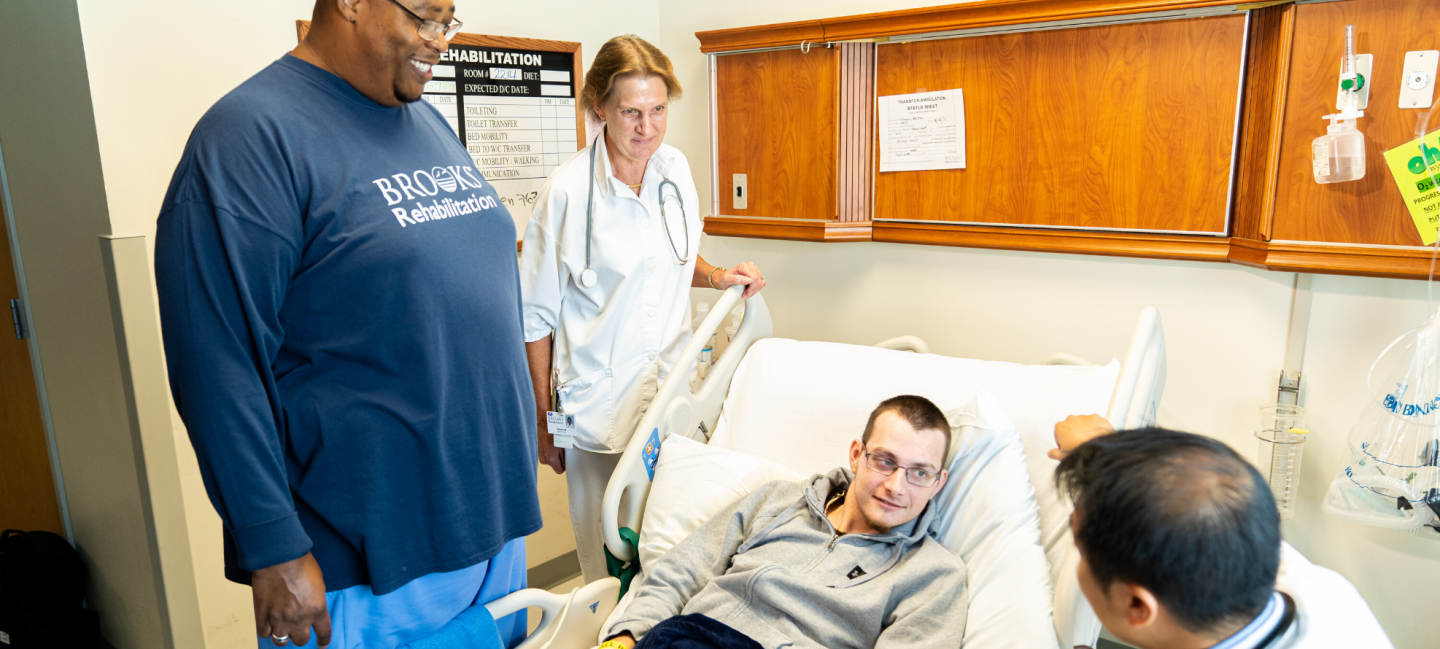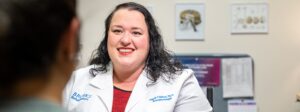The Disorders of Consciousness Program (DoC)

Back to physical health resource hub
Brooks Rehabilitation Hospital’s Disorders of Consciousness (DoC) Program is a specialized short-term program, initiated more than 20 years ago, and specifically designed for patients who present in a reduced or minimally conscious state.
Laura Geiwitz, CPCRT, SLP, has been a cognitive therapist at Brooks Rehabilitation Hospital for 15 years and works directly with DoC patients and their families. “The DoC program sets Brooks apart. In most other health systems, the patient must be able to engage with a therapist and follow some directions for inpatient brain injury rehabilitation to begin,” said Geiwitz. “When you have a disorder of consciousness, the patient doesn’t have the capacity to do that. Our DoC program provides comprehensive evaluations and therapy for these patients – earlier than the usual rehabilitation process.”
The DoC patients are no longer in a coma – the deep unconscious state – and are designated by how much they interact with their environment. Patients in the unresponsive wakefulness state (UWS) – previously called the vegetative state – have a sleep/wake cycle but do not otherwise interact in a meaningful way. The next level is the minimally conscious state (MCS). These patients have a low, but definite, behavioral response to their environment.
Shortly after admission into the DoC program, a comprehensive team evaluation, led by a neuropsychologist, is completed with a cognitive therapist, a physiatrist, as well as physical, speech and occupational therapists. The evaluation provides the family with an accurate clinical diagnosis of their loved one’s recovery state – either UWS or MCS.
A patient is in the DoC program for about two to three weeks, during which time the team provides specific therapies, determines the best mix of medications and identifies opportunities to provide stimulation that may promote recovery. The team conducts regular measurements to determine progress. If in that timeframe the patient progresses and can demonstrate consistent and purposeful interaction with the environment, such as using basic objects or reacting to communications or commands, they are said to have “emergence from DoC.” The patient would now be able to engage with a therapist – even if at a low level – and would become a candidate for traditional brain injury rehabilitation.
If a patient doesn’t emerge within the two- to three-week timeframe, it doesn’t mean the patient has stopped progressing or won’t emerge later. However, it is not optimal to leave the patient in the hospital after that time. So, a major part of the DoC program is to fully train and equip patient families/caregivers to care for their loved ones at home, and to recognize progress and potential emergence for themselves.
“We never lose hope,” said Geiwitz. “If the patient goes home and later emerges, they frequently come back to Brooks for continued rehabilitation into our comprehensive brain injury rehabilitation program.”


